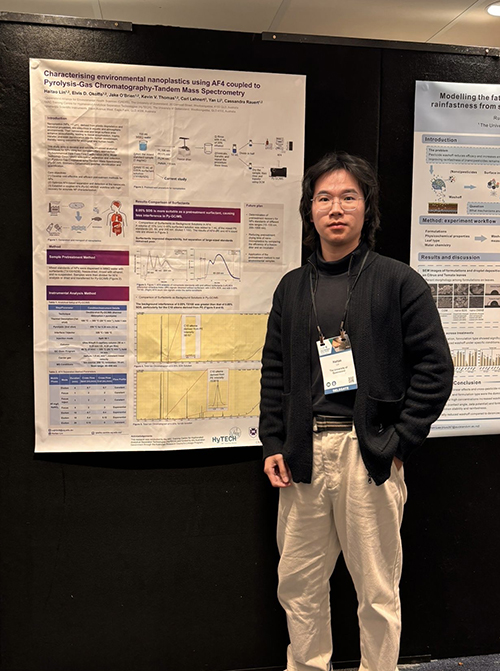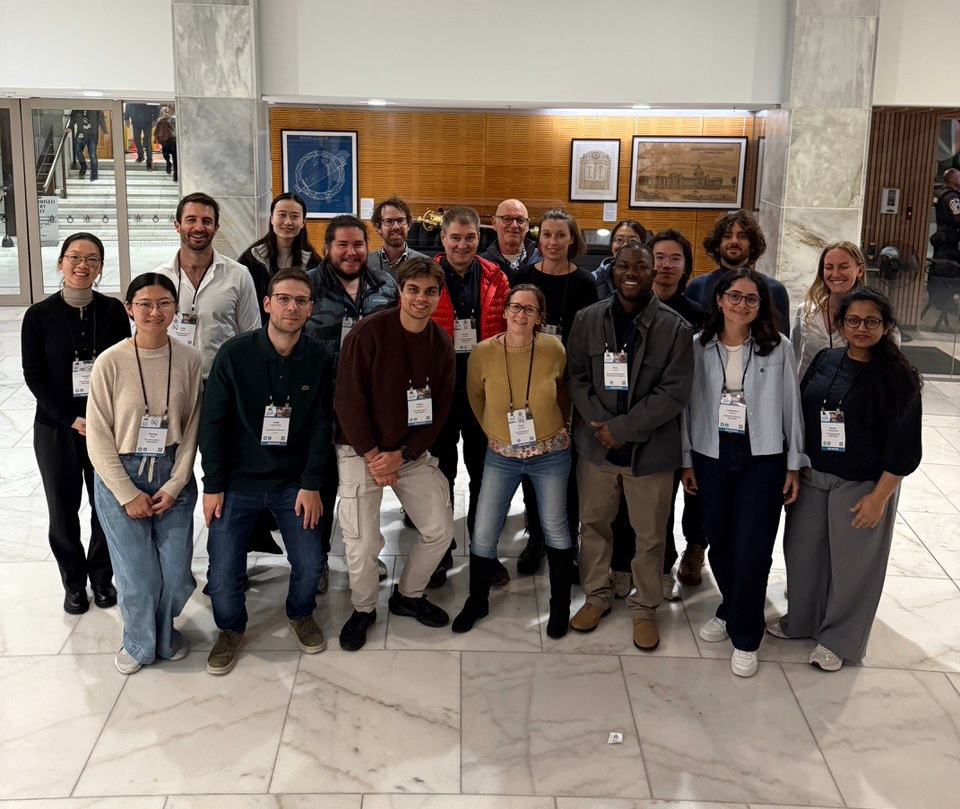A large cohort of QAEHS researchers and HDR students recently attended the SETAC Australasia conference in Wellington, New Zealand. The cohort, led by Prof Kevin Thomas and Prof Jochen Mueller, included A/Prof Sarit Kaserzon, Dr Elvis Okoffo, Dr Cassie Rauert, Dr Jake O’Brien, Dr Ian Zammit, Josh Tynan, Dr Run Tian as well students, Lily Weir, Simran Kaur, Ruvini Weerasinghe, Gabriel De la Torre, Haitao Lin, Honglin Chen, Zeyang Zhao, Tobias Hulleman, Fangfang Lou, Fatma Nur Eraslan and Jorge Santiago.

First year PhD student Haitao Lin, received Runner Up for the Best Student Poster at the conference for his research on Characterising environmental nanoplastics using Asymmetrical Flow Field-Flow Fractionation coupled to Pyrolysis-Gas Chromatography-Tandem Mass Spectrometry.
PhD student Simran Kaur commented “Presenting my work on tyre wear particles at SETAC-ACTRA 2025 was such a rewarding experience. It sparked thoughtful conversations about tyre-related pollution, human exposure, and environmental risks, especially in underexplored contexts like balcony dust! I’m incredibly grateful for the opportunity to connect with brilliant researchers, learn from diverse fields, and grow as a student researcher.” Gabe De la Torre (PhD student) also found the conference rewarding reporting, “By attending the SETAC conference, I was able to present my latest PhD research, connect with potential collaborators, and receive valuable feedback from experts in the field. It was also a wonderful opportunity to explore Wellington and experience New Zealand’s culture.” Student Lily Weir who presented her work on From lab to field: A comparison of the biodegradation rates of organic chemicals in a subtropical river, also found the conference rewarding that she “had the absolute pleasure of giving a platform presentation at the SETAC AU/ACTRA conference in Te Whanganui-a-Tara (Wellington), Aotearoa (New Zealand). The conference was energetic and motivating, with conversations not only about research but also about how we collaborate across disciplines and institutions, translate our findings into practice, and reflect on how we live and connect with our environment. Windy Wellington lived up to its name (after lulling us with a few sunny days!), and some of the QAEHS team wrapped up the busy week with a peaceful morning at Zealandia.”
Other presentations and posters included:
- Keynote from Prof Thomas on Plastic particles and human health: Addressing analytical challenges in exposure assessment
- Lily Pan on Assessing the permeation of surface-modified nanoplastics (NPs) across in vitro human gut-blood and blood-brain barrier models
- Dr Zammit on Triaging chemical analyses in product testing: The role of non-destructive analytical methods
- Dr Sara Ghorbani Gorji on PFAS in tap and bottled water in Australia: Overcoming detection limits and background contamination and PFAS in cosmetics: Investigating natural and organic products
- Gabriel De la Torre on Quantifying small antifouling paint particles in sediments by pyrolysis-gas chromatography-mass spectrometry
- Dr O’Brien on A national survey of the occurrence of antimicrobials in wastewater influent, effluent and biosolids
- Dr Tian on Does benchmarking increase the accuracy of predicting biodegradation across aquatic ecosystems?
- Simran Kaur on Where do tyre particles go? Quantifying and identifying tyre wear particles in balcony road dust
- Tobias Hulleman on Machine learning for predicting environmental mobility based on retention behaviour
- Zeyang Zhao on Estimating ketamine consumption and evaluating ketamine/norketamine ratio across Australia during Census week 2021 using wastewater-based epidemiology
- Prof Mueller on Reasons for (not?) using passive sampling techniques for environmental monitoring
- Josh Tynan on The Australian Environmental Specimen Bank (AESB): A national resource for chemical exposure science and human and environmental monitoring
- Dr Okoffo on Everyday exposure to plastic particles: Investigating microplastics and nanoplastics in Australian drinking water and release from plastic products
- Honglin Chen on Understanding spatial and temporal trends of atmospheric microplastics in laboratories
- Lily Weir on From lab to field: A comparison of the biodegradation rates of organic chemicals in a subtropical river
- Ruvini Weerasinghe on Optimising Pyrolysis GC-MS techniques for halogenated plastics detection




